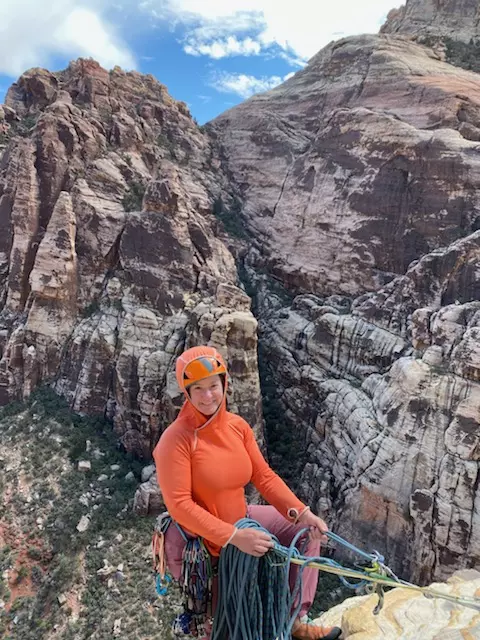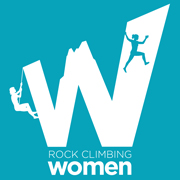There are many different ways to be a climber. In the world of roped climbing, most of us start off indoor climbing at gyms where we build up our mental and physical strength top-roping.
From there we frequently make new friends or sign up for classes that take us on our first adventures climbing outdoors. We are simultaneously terrified and exhilarated on real rock faces in ways we never thought possible.
These first adventures are the gateway to a whole new way of life for many of us. You are now very close to a threshold that once crossed requires every spare moment of your life to be spent scheming on when and where you are going to climb next.
Depending on where your first outdoor climbing adventure takes you, you may find yourself sport climbing or trad climbing without even knowing the difference between the two.
For example, if you find yourself heading out to Joshua Tree National Park then you’ll be learning a lot about trad climbing but if Ten Sleep, Wyoming is your destination, then you’ll be gearing up for sport climbing. So let’s talk about what sport versus trad climbing looks like and the skills and gear required for each.
Sport Climbing
Sport climbing most closely resembles what you see on the lead wall at your gym. Bolts have been drilled into a rock face, each with a hanger that looks like a metal ring. These bolts are what we call fixed or permanent protection because they protect the climber as they ascend and are left in the wall for everyone to use.
Your lead climber will clip one end of their sport draw into the first bolt on the wall and then put the end of the rope tied to their harness into the other end of the draw.
The lead climber will continue up the route hanging a draw on each bolt and clipping their end of the rope into the bottom carabiner of each draw. In this way, the lead climber is protected from a ground fall as they make their way to the anchors.
Gearwise, all sport climbers really need is enough sport draws for each bolt on a climb, plus two more for the anchor (along with a rope and belay device of course).
There are two really important skills for sport climbers to have. The first is the ability to lead belay so that your lead climber can safely get themselves and the rope to the anchors.
Without a knowledgeable and attentive lead belay, your lead climber may as well be free solo climbing (done without the aid of ropes). The other important skill is anchor cleaning, which allows you to retrieve all of your draws and return to the ground safely once your party has finished climbing a route.
Trad Climbing
Trad climbing, on the other hand, requires more gear and more skills. Short for traditional climbing, trad climbing requires you to bring your own removable protection. The lead climber places pieces of removable protection into features, usually cracks, that exist in the rock face.
This removable protection (pro for short) comes in quite a few forms with a multitude of sizes but generally falls into two different categories: active and passive trad gear.
A standard rack of pro is a mix of active, in the form of camming devices, and passive, in the form of nuts. Trad climbers bring a range of sizes based on what they know about the climb.
In addition to your pro, you’ll also need draws. Trad climbers tend to opt for what is known as an alpine draw. Made up of a sling and two carabiners, an alpine draw can be lengthened to reduce rope drag and better keep gear where you place it.
In the realm of trad climbing, climbers need to not only be solid lead belayers but they also need to know how to set up their own anchors using pro. Getting to the top of a climb for trad climbers is frequently only half the adventure though.
Once your party has summited, you also then need to be able to safely rappel back to the base of your climb in many instances.
Speaking of rappelling, setting up a rappel and safely descending it are skills that are important for both sport and trad climbers, especially if you decide you want to try multi-pitch climbing.
Multi-pitch means a single climb that is too long to be done with one rope and must be broken up into sections requiring multiple anchors.
Sport and trad climbers alike hear the call of the multi-pitch. So whichever type of climbing you are drawn to, it is also good to know how to belay your partner up to a belay station on the wall.
😱
Yes, you read that right, you may be hanging on the side of a wall belaying a follow or even providing a lead belay while, you know, just hanging out.
Whether you’re more attracted by the flow of clipping bolts or the challenge of faith that you’ll find a placement for your pro, we are stoked you’re climbing as part of our global community of Rock Climbing Women! If you want more climbing content, sign up for our awesome weekly newsletter below.

Jenny Nichols got her climbing start in Flagstaff, AZ in 2007. Today she lives in Seattle, WA where she works as a K-12 teacher. While she also dabbles in mountain biking, hiking, and kayaking, her passion is to combine climbing and international travel. To date she has climbed in thirteen different countries. She’s currently also learning how to woman a sailboat.


